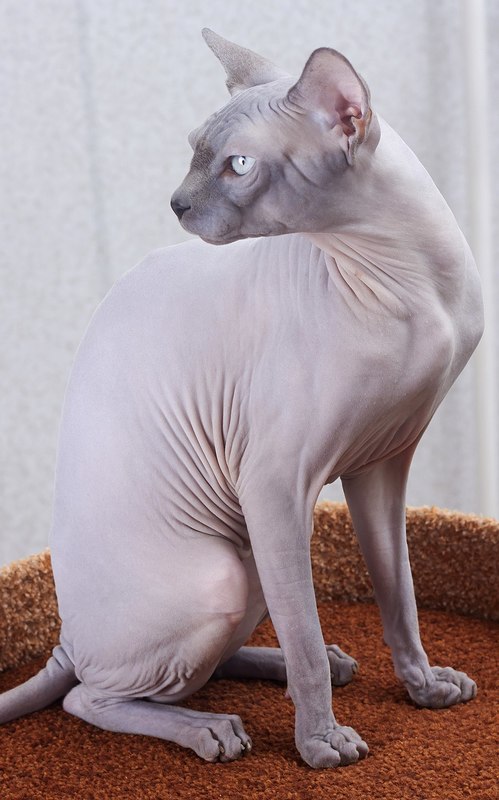Sphynx
History While hairless cats have been documented for centuries, the Sphynx specifically is a fairly new breed. The Sphynx is the first breed to have been selectively bred to be hairless, roughly in 1970 in Ontatio, Canada.
Temperment Sphynx cats may look unfriendly, but in reality they are one of the most affectionate cats in the US. They are known to greet owners at the door and sleep underneath the covers with owners. Sphynx cats are highly active, intelligent cats with a mischevious streak.
Size Medium
Appearance The breed's most distinct features is its hairless appearance. In reality, Sphynx cats are covered in short, thin hairs similar in texture to peach fuzz. However, the cat typically has no whiskers or eyelashes. They have large, pointy ears and a thin, firm tail. The breed's skin pigment can feature a variety of colors and patterns.
Things to Consider These affectionate cats require regular grooming to keep their skin clean and supple. Their bodies as well as ears and nails should be cleaned weekly to prevent buildup of oil and debris.
Sphynx cats do not have fur coats to protect them from extreme temperatures, so these cats should never be left out in the cold. Those that are allowed to go outside may need sun protection on pale skin.
This breed requires regular attention and mental stimulation. As such, this cat is not recommended for busy households where owners are away from home for extended periods.
Health Concerns Sphynx cats who are not regularly bathed may develop rashes and fungal infections of the skin. Skin cancer may be a risk for cats who are regularly exposed to the sun. Heart disease is common in Sphynx cats, with as many as 34% of the breed showing signs of an abnormal hearty, by one 2012 study.
